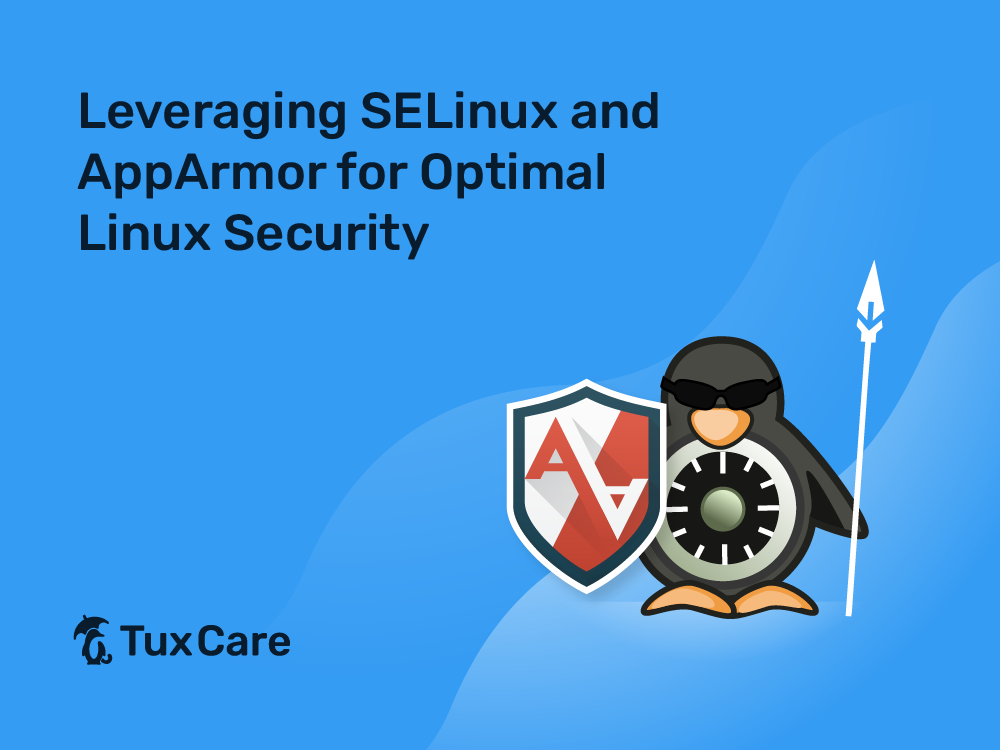Leveraging SELinux and AppArmor for Optimal Linux Security
- Linux Security Modules play a crucial role in enhancing the security posture of Linux systems.
- AppArmor’s policy language is less complex compared to SELinux.
- Both SELinux and AppArmor introduce some performance overhead due to policy enforcement.
These days, during a time when cyber threats are increasingly sophisticated, ensuring the security of your Linux environment is more critical than ever. Linux offers a powerful toolset for enhancing system security: Linux Security Modules (LSM). It is a framework for implementing Mandatory Access Control (MAC), ensuring only authorized users and processes can access your data.
LSM provides security hooks within the Linux kernel, allowing the implementation of various security policies without the need to modify the kernel itself. Examples include SELinux, Smack, Tomoyo, and AppArmor.
This article discusses how LSMs like SELinux and AppArmor can be fine-tuned to boost Linux security while navigating the complexities of configuration.
Understanding Mandatory Access Control
Mandatory Access Control (MAC) is a security model used to control access to resources based on pre-defined, centrally managed policies. Unlike Discretionary Access Control (DAC), where resource owners have the freedom to set access permissions, MAC policies are enforced by the system and cannot be altered by individual users. The operating system enforces the defined policies regardless of user privileges. Even if a user has administrative rights, they cannot access resources beyond what their security policy allows.
SELinux (Security-Enhanced Linux) uses mandatory access controls (MAC) to restrict the actions that users and programs can perform on the system. It offers a comprehensive security model with a rich policy language.
AppArmor is another Linux Security Module that implements mandatory access controls through path-based rules. It uses profiles to define the allowed actions for programs, providing an easier-to-understand-and-manage alternative to SELinux. AppArmor is particularly popular in environments where usability and ease of configuration are priorities.
Maximizing Linux Security with SELinux and AppArmor
Both SELinux and AppArmor can significantly enhance Linux security, but they require careful tuning to maximize their effectiveness without compromising system performance.
Fine-Tuning SELinux
Policy Configuration
SELinux policies define the permissions for every process, file, and user. Start by modifying the default targeted policy, which restricts access to a few essential services, if necessary. It allows you to fine-tune how strictly access controls are enforced on your system.
SELinux Modes
SELinux operates in three different modes: enforcing, permissive, and disabled.
Enforcing Mode: This is the default mode in which SELinux actively applies the security policy. Any actions that violate the policy are blocked and logged. This mode provides the highest level of security.
Permissive Mode: In this mode, SELinux policies are not enforced, but any attempted violations are logged. This allows administrators to see what actions would be blocked if the system were in enforcing mode. This mode is mainly used for debugging or developing new SELinux policies to identify potential conflicts before enabling enforcement.
Disabled: SELinux is completely turned off, and no policies are applied or enforced. Disabling SELinux is generally not recommended for production systems due to Linux security risks.
Use Booleans
SELinux booleans are switches that allow you to enable or disable certain security policies dynamically at runtime. This makes it possible to improve security without having to change the complete set of policies. However, it’s important to note that SELinux booleans typically control high-level policy options, not granular, file-by-file permissions. For example, a boolean might control whether Apache can access certain directories, but it won’t specify which exact files Apache can access within those directories.
Audit Logs: SELinux produces large audit logs. Review these logs on a regular basis to find and resolve any denials or misconfigurations. Tools like audit2allow can be used to create custom policies to address specific issues.
Fine-Tuning AppArmor
Profile Creation
AppArmor profiles define the allowed actions for applications. They are stored in the /etc/apparmor. d directory. You can use tools like aa-genprof and aa-logprof to simplify profile creation and management.
Profile Modes
AppArmor profiles function in two modes, complaint (learning) mode and enforce mode.
Enforce: AppArmor actively enforces the security policies defined in the profile. Any actions by applications that violate these policies are blocked by the kernel, preventing unauthorized access or actions. Additionally, enforce mode logs these blocked attempts, allowing for monitoring and troubleshooting.
Complain: AppArmor does not enforce the security policies. Instead, it logs actions that would be blocked in enforce mode. It is useful for debugging and developing new profiles because it allows administrators to see what actions would be restricted without actually preventing them.
Profile Grouping
Group related profiles together to manage them more efficiently. This practice simplifies the application of security policies across similar applications and services.
Event Monitoring
Regularly monitor AppArmor logs to identify and resolve profile violations. This practice ensures that profiles remain effective and up to date with changing application behaviors.
Balancing Security and Performance
While enhancing Linux security is paramount, it should not come at the expense of system performance. You want your system to be safe from unauthorized access or malicious attacks. But you also need it to perform well, delivering smooth operation to users. Security and performance are like two gears working together in a machine. They both contribute to the overall well-being of the system and finding the right balance between them is crucial.
Here are some strategies to balance both aspects effectively:
Minimize Overhead: Both SELinux and AppArmor introduce some performance overhead due to policy enforcement. To minimize this, ensure the policies are as specific as possible, avoiding overly broad rules that can slow down the system.
Additionally, regularly review your security profiles and policies to ensure they are efficient. You can remove unnecessary rules and consolidate similar ones to reduce the processing load on the system.
Testing: Before rolling out new policies, thoroughly test them in a staging environment. Use performance monitoring tools to measure the impact on performance and fine-tune the policies accordingly.
Gradual Rollout: Enforce security policies in a phased approach, prioritizing the most critical services first. This allows you to keep an eye on how performance is affected and make adjustments as necessary without overwhelming the system.
Automation Tools: Use automation tools to manage and apply security policies consistently across your infrastructure. Tools like Ansible, Puppet, or Chef can streamline the deployment and management of LSM policies.
Simplifying LSM Configuration
Despite their powerful capabilities, configuring Linux Security Modules like SELinux and AppArmor can be challenging. Here are some tips to simplify the process:
Documentation: Both SELinux and AppArmor have extensive documentation and active communities. Utilize these resources to understand best practices and common configurations.
Management Tools: Utilize management tools like setroubleshoot for SELinux and YaST for AppArmor to simplify the configuration and troubleshooting processes.
Training and Education: Invest in training and education for your team. Understanding the configurations of SELinux and AppArmor is crucial for effective implementation and management.
Final Thoughts
By understanding their mechanisms and adopting a balanced configuration approach, you can leverage the benefits of Linux Security Modules without sacrificing system performance.
Furthermore, for organizations requiring continuous availability and minimal disruption, Linux kernel live patching emerges as a game-changing strategy. Live patching allows critical security updates to be applied to the kernel without the need for system reboots. This ensures seamless operation and uninterrupted protection against Linux kernel vulnerabilities.
TuxCare’s KernelCare Enterprise provides automated live patching for all major Linux distributions, including Ubuntu, Debian, RHEL, CentOS, AlmaLinux, Rocky Linux, CloudLinux, Oracle Linux, and more.



 Documentation
Documentation Login
Login




